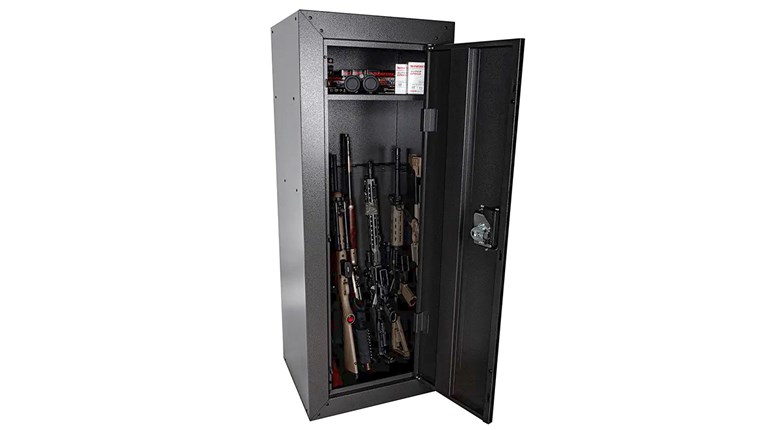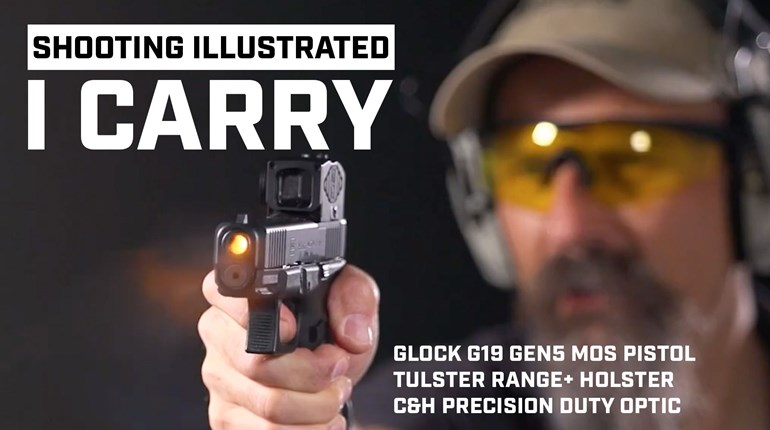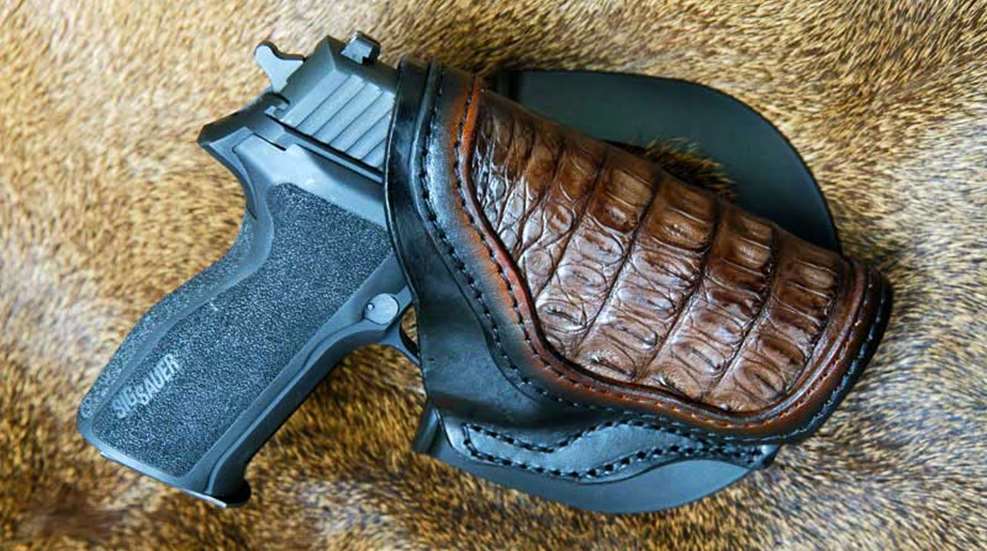
Photos by Oleg Volk.
So, you want to build your own handgun holster?
Yes, that thought has crossed more than one gun enthusiast's mind. Especially if said enthusiast is a left-handed shooter or prefers cross-draw over strong-side. Most major manufacturers cater to a one-size-fits-many demographic. They make a decision on what to produce and how to price it for maximum profit. Those with unique tastes or specialized needs are often out of luck.
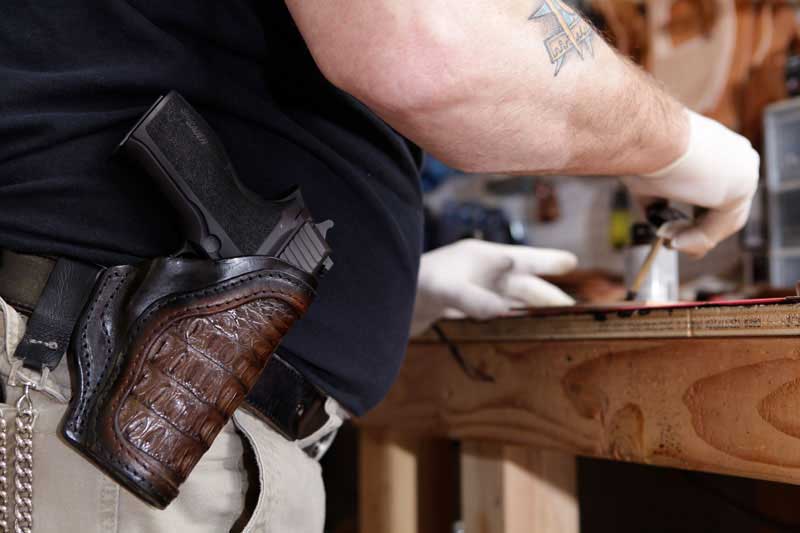
Then there is the middle tier filled with those wanting better equipment than the inexpensive nylon offerings. For many of these enthusiasts, high-quality, handmade rigs might be just out of their price range. Sometimes, all they can afford is the gun, and while they would love a hand-crafted artisan holster, they just can’t afford it.
For those folks, an alternative option might be a do-it-yourself rig. To embark on your own leather-holster project, a few essential tools are needed. Here are some of the basic implements used in the trade of holster making.
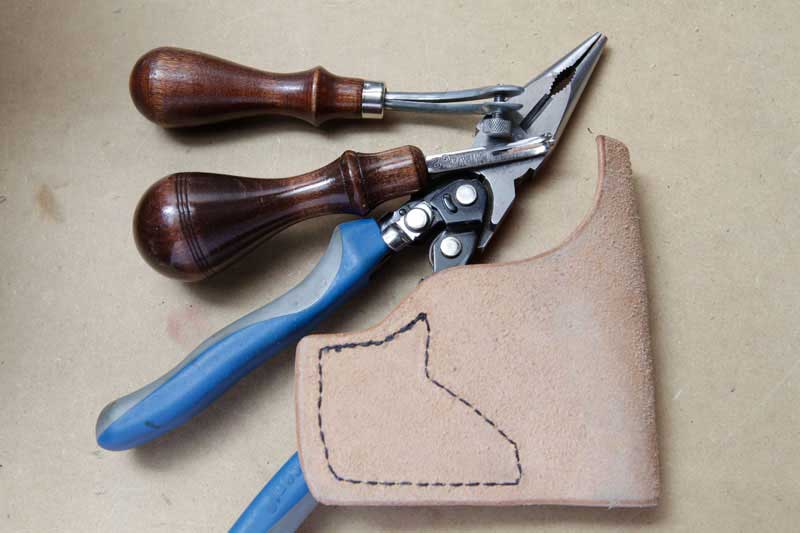
For most leather crafters at the hobby stage, the go-to source is Tandy Leather. They cater to novices, hobbyists and professionals, have staff that are knowledgeable in the art of leather crafting and are always well-stocked. They tend to have brick-and-mortar stores near major metropolitan areas or more rural areas that have a vibrant equestrian culture. They offer holster kits which consist of pre-cut basic holster designs in both pancake styles (for semi-auto) and western style (for revolvers). They also sell leather in bulk for the more adventurous who want to try their hand at creating their own holster from scratch.
For working leather, the tools are basic. You’ll need a knife of some sort to cut the leather with, a hand stitching awl to sew it with, a sheet of both coarse (60 grit) and fine (180 grit) sandpaper to smooth out the edges, an edge-beveler to knock down the sharp edges of the leather and an edge slicker, which is what buffs out the edge and gives it a glass-like finish.
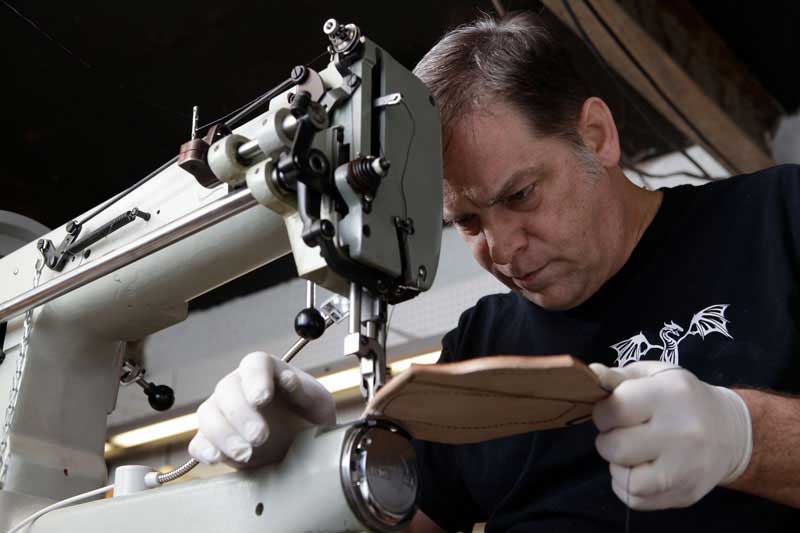
The Knife: I’ve been making holsters now, professionally, for more than a decade. I still use the same style knife in all my leatherworking: the basic retractable-blade utility knife, otherwise known as a box-cutter, sheet-rock knife, etc. It is one of the must-have tools in any toolbox, garage worktable, or even the ubiquitous junk-drawer in most family kitchens. A Stanley retractable utility knife can be had at Walmart for the low price of $4, and it’s the best investment you can make for a leather-cutting knife.
Stitching Awl: You can get a stitching awl through Tandy for $25 + shipping. You can get the same thing at a Jo-Anne Fabrics, Hobby Lobby, Michaels Crafts or any other craft/hobby store in your area for around the same price as Tandy and save a few dollars on shipping.
Sandpaper: Basic sandpaper will run you, on average, around a dollar a sheet. Most local mom-and-pop hardware stores will sell it by the sheet. One sheet each of 60 and 180 grit will be plenty.

Edge Beveler: This will probably be the fanciest tool you’ll get, as it really isn’t a multi-purpose tool. It has one job, which is to bevel the hard edge once you sandpaper it to flush it up. You may find them at any Tandy, or any craft/hobby shop such as Michaels or Hobby Lobby. They run roughly $8 to $10.
Edge Slicker: Another purpose-made tool, it looks like a round 6-inch long hunk of broom handle, with slots cut into the circumference, each slot being a different width and depth. As with the beveler, it can be had through Tandy, or any of the aforementioned craft/hobby stores.
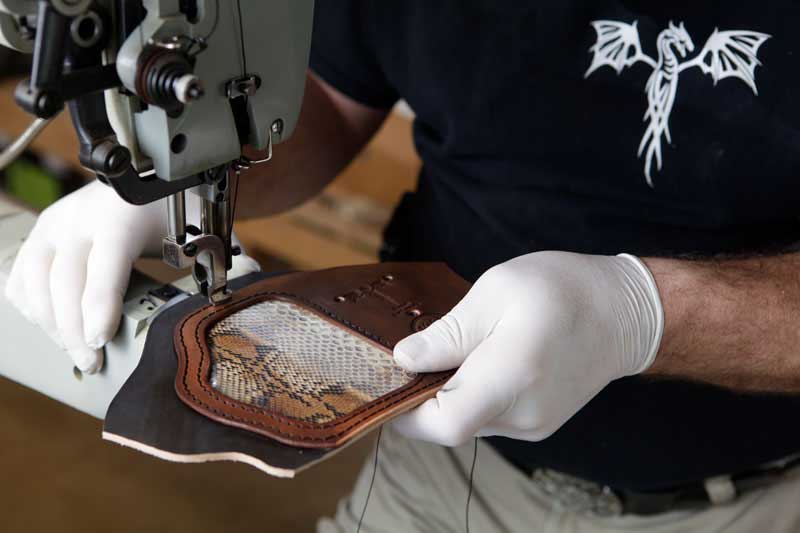
Leather is measured by two parameters: weight and size. Weight refers to the thickness of the leather when a 12-inch square is cut, and the total weight is measured. Typically, a 12-inch square of vegetable-tanned cowhide that is 1/8 inch thick will weigh eight ounces. So, the “weight” (or thickness) is referred to as eight-ounce leather. Four-ounce leather, being half the weight, will also be half the thickness of 8 oz, which will mean it measures at 1/16” thick (one sixteenth inch).
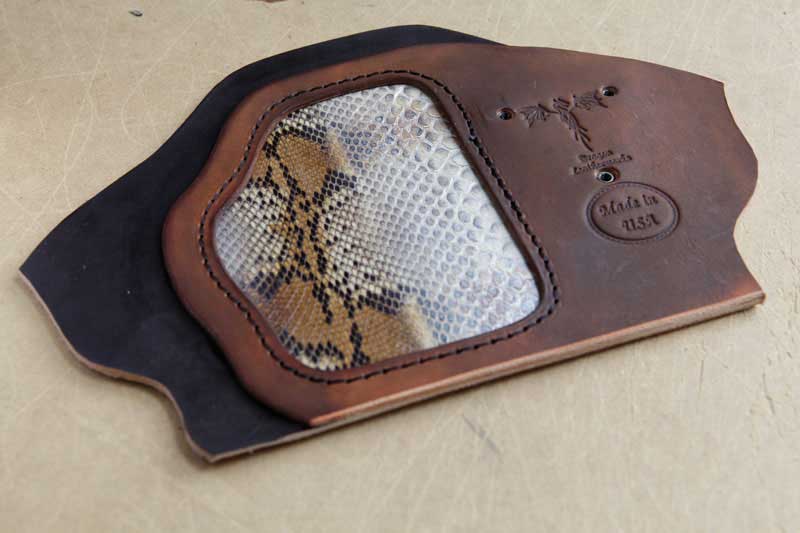
For holster-making, the preferred cut of cowhide is called “shoulder” or “double shoulder”, in a thickness (weight range) of 7-8 ounces. Shoulder is the cut of skin that goes from the base of the neck back toward the rump and spans from the spine down to the shoulder (where the front leg attaches to the body). A double-shoulder is one cut as described above, spanning from the left shoulder, over the spine and down to the right shoulder. The shoulder cut yields some of the best all-around leather for holsters, belts and other leather crafts due to being fairly dense with very little fatty deposits under the skin. It will tend to be a stiffer leather and feel denser than most other cuts. A typical single-shoulder will cost roughly $75 and yield roughly three finished holsters (depending on the design or size).
About the Author: Dennis Badurina is the owner of Dragon Leatherworks, a custom holster manufacturer located in Tennessee, and has been hand-crafting fine leather holsters for more than a decade.
So, you want to build your own handgun holster?
Yes, that thought has crossed more than one gun enthusiast's mind. Especially if said enthusiast is a left-handed shooter or prefers cross-draw over strong-side. Most major manufacturers cater to a one-size-fits-many demographic. They make a decision on what to produce and how to price it for maximum profit. Those with unique tastes or specialized needs are often out of luck.

Then there is the middle tier filled with those wanting better equipment than the inexpensive nylon offerings. For many of these enthusiasts, high-quality, handmade rigs might be just out of their price range. Sometimes, all they can afford is the gun, and while they would love a hand-crafted artisan holster, they just can’t afford it.
For those folks, an alternative option might be a do-it-yourself rig. To embark on your own leather-holster project, a few essential tools are needed. Here are some of the basic implements used in the trade of holster making.

For most leather crafters at the hobby stage, the go-to source is Tandy Leather. They cater to novices, hobbyists and professionals, have staff that are knowledgeable in the art of leather crafting and are always well-stocked. They tend to have brick-and-mortar stores near major metropolitan areas or more rural areas that have a vibrant equestrian culture. They offer holster kits which consist of pre-cut basic holster designs in both pancake styles (for semi-auto) and western style (for revolvers). They also sell leather in bulk for the more adventurous who want to try their hand at creating their own holster from scratch.
For working leather, the tools are basic. You’ll need a knife of some sort to cut the leather with, a hand stitching awl to sew it with, a sheet of both coarse (60 grit) and fine (180 grit) sandpaper to smooth out the edges, an edge-beveler to knock down the sharp edges of the leather and an edge slicker, which is what buffs out the edge and gives it a glass-like finish.

The Knife: I’ve been making holsters now, professionally, for more than a decade. I still use the same style knife in all my leatherworking: the basic retractable-blade utility knife, otherwise known as a box-cutter, sheet-rock knife, etc. It is one of the must-have tools in any toolbox, garage worktable, or even the ubiquitous junk-drawer in most family kitchens. A Stanley retractable utility knife can be had at Walmart for the low price of $4, and it’s the best investment you can make for a leather-cutting knife.
Stitching Awl: You can get a stitching awl through Tandy for $25 + shipping. You can get the same thing at a Jo-Anne Fabrics, Hobby Lobby, Michaels Crafts or any other craft/hobby store in your area for around the same price as Tandy and save a few dollars on shipping.
Sandpaper: Basic sandpaper will run you, on average, around a dollar a sheet. Most local mom-and-pop hardware stores will sell it by the sheet. One sheet each of 60 and 180 grit will be plenty.

Edge Beveler: This will probably be the fanciest tool you’ll get, as it really isn’t a multi-purpose tool. It has one job, which is to bevel the hard edge once you sandpaper it to flush it up. You may find them at any Tandy, or any craft/hobby shop such as Michaels or Hobby Lobby. They run roughly $8 to $10.
Edge Slicker: Another purpose-made tool, it looks like a round 6-inch long hunk of broom handle, with slots cut into the circumference, each slot being a different width and depth. As with the beveler, it can be had through Tandy, or any of the aforementioned craft/hobby stores.

Leather is measured by two parameters: weight and size. Weight refers to the thickness of the leather when a 12-inch square is cut, and the total weight is measured. Typically, a 12-inch square of vegetable-tanned cowhide that is 1/8 inch thick will weigh eight ounces. So, the “weight” (or thickness) is referred to as eight-ounce leather. Four-ounce leather, being half the weight, will also be half the thickness of 8 oz, which will mean it measures at 1/16” thick (one sixteenth inch).

For holster-making, the preferred cut of cowhide is called “shoulder” or “double shoulder”, in a thickness (weight range) of 7-8 ounces. Shoulder is the cut of skin that goes from the base of the neck back toward the rump and spans from the spine down to the shoulder (where the front leg attaches to the body). A double-shoulder is one cut as described above, spanning from the left shoulder, over the spine and down to the right shoulder. The shoulder cut yields some of the best all-around leather for holsters, belts and other leather crafts due to being fairly dense with very little fatty deposits under the skin. It will tend to be a stiffer leather and feel denser than most other cuts. A typical single-shoulder will cost roughly $75 and yield roughly three finished holsters (depending on the design or size).
About the Author: Dennis Badurina is the owner of Dragon Leatherworks, a custom holster manufacturer located in Tennessee, and has been hand-crafting fine leather holsters for more than a decade.





























